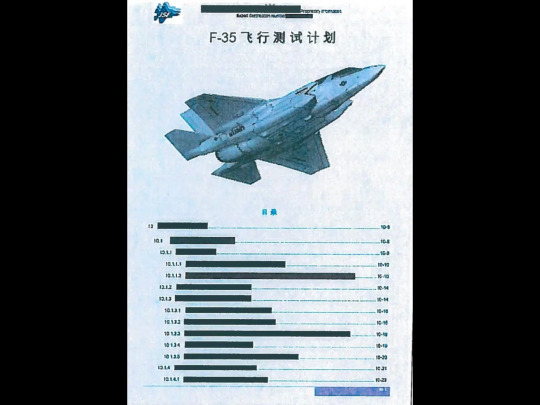#Company Formations Canada
Text

#Custom t-shirt#Corporate Apparel Oakville#Custom Clothing Ontario#Promotional Products#Promotional items#Promotional products Oakville#Vehicle Graphics#Large Format Printing#SEO Services#SEO services near me#Local SEO services Canada#Seo services company Canada#Social Media Marketing#Social Media Marketing Company#Social Media Marketing Canada#Digital Marketing Agency Oakville#Website Design#Web design company#Website Design Company Oakville#Graphic design services near me#Custom logo design#Mobile App Development#App developers toronto#App development#Car vinyl#Car wrap
4 notes
·
View notes
Link
Company Formation
0 notes
Text

"Logan Charles Roy was a legendary news proprietor, a media visionary, a brilliant businessman, a job creator and, above all, a loving family man. For over 60 years, he presided over the company he founded, Waystar Royco, the largest family-owned media conglomerate in the United States.
Logan's childhood was marked by adversity. Born in Dundee, Scotland, on the eve of World War 2, his father died shortly after his birth. A few years later his mother, Helen Roy, sent Logan and his older brother Ewan to Canada to escape. They were never to see their mother again, and their sister Rose also died as a young child. Both Logan and Ewan were raised in rural Quebec by relatives.
Though academically gifted, Logan left school at the age of 13. After a brief period working as a store clerk, Logan inherited his Uncle Noah's small advertising billboard company along with his brother Ewan. Over the next decade they grew their small businesses into the largest billboard companies in Canada. From there, the brothers' diverging interests saw Logan take control of the company.
Logan moved to the United States in 1972, determined to diversify Waystar Royco by moving into media. He quickly acquired several declining newspapers, such as the New York Globe, working his magic to dramatically turn these around and [elevate?] them to their former glory.
Logan firmly established himself as one of the country's most important media moguls with the launch of ATN, American Television News, in 198[1?/4?]. Now widely regarded as the nation's most [?respected] news source and a [?format admired] around the world, ATN changed the American media landscape overnight. Since its launch, ATN has, in the service of public interest, provided a [??] breed of television ...
[STEWY FINGER INTERLUDE 👀 ]
... several American Presidents ... necessary, a strident defender of the ... American people against threats both [[?? and ??].
Though Logan scaled such lofty heights [??presumably 'in his'] public life, he remained a humble individual, prioritizing his work, his family, and his [??]. He is survived by his wife Marcia and his children, Connor, Kendall, Siobhan and Roman Roy."
776 notes
·
View notes
Text
Canada's privatised shadow civil service

PJ O’Rourke once quipped that “The Republicans are the party that says government doesn’t work and then they get elected and prove it.” But conservative parties have unlikely allies in the project to discredit public service: neoliberal “centrist” parties, like Canada’s Liberal Party.
If you’d like an essay-formatted version of this post to read or share, here’s a link to it on pluralistic.net, my surveillance-free, ad-free, tracker-free blog:
https://pluralistic.net/2023/01/31/mckinsey-and-canada/#comment-dit-beltway-bandits-en-canadien
The Liberals have become embroiled in a series of scandals over the explosion of lucrative, secretive private contracts awarded to high-flying consultancy firms who charge hundreds of times more than public sector employees to do laughably bad work.
Front and centre in the scandal, is, of course, McKinsey, consligieri to opioid barons, murdering Saudi princes, and other unsavoury types. McKinsey was brought in to “consult” on strategy for the Business Development Bank of Canada (BDC), a Crown corporation that gives loans to Canadian businesses.
https://www.cbc.ca/news/politics/business-development-bank-canada-hudon-mckinsey-1.6720914
While there, McKinsey performed as per usual, veering from the farcical to the grotesquely wasteful. Most visible was the decision to spend $320,000 on a livecast fireside chat between BDC president Isabelle Hudon and a former Muchmusic VJ that was transmitted to all BDC employees, which featured Hudon and the host discussing a shopping trip they’d taken together in Paris.
Meanwhile, BDC has been hemorrhaging top people, which leaving the organisation with many holes in its leadership — the kind of thing that would pose an impediment to its lofty goals of substantially increasing the support it gives to businesses run by women, First Nations people and people of color.
Hudon — a Trudeau appointee — vowed to “start from scratch” when she took over the organisation, but then went ahead and did what her predecessors had done: hired outside consultants who billed outrageous sums to repurpose anodyne slide-decks full of useless, generic advice, or unrealistic advice that no one could turn into actual policy. They also sucked up BDC employees’ time with endless interviews.
The BDC has (reluctantly) disclosed $4.9m in contracts to McKinsey. The CBC also learned that Hudon parachuted several cronies from her previous job at Sun Life into top roles in the organisation, and that BDC had reneged on promised promotions for many long-term staffers. Hudon also repeatedly flew a chauffeur across the country from Montreal to BC to drive her around.
In Quebec, premier François Legault hired an army of McKinsey consultants at $35,000 per day to advise him on covid strategy, for a total bill of $8.6m. McKinsey’s contract with the province stipulated that they wouldn’t have to disclose their other clients, even in the event that they had conflicts of interest:
https://www.cbc.ca/news/canada/montreal/caq-legault-mckinsey-pandemic-consulting-1.6602374
The contract was kept secret, as was the long-running, $38m contract between McKinsey and the Hydro Quebec power authority:
https://ici.radio-canada.ca/nouvelle/1927738/mckinsey-hydro-quebec-consultants-barrages-affaires
Most of the bad press McKinsey gets revolves around the evil advice it gives — like when it advised opioid companies to pay cash bonuses to pharma distributors for every death-by-overdose in their territory (no, I’m not making this up):
https://pluralistic.net/2022/06/30/mckinsey-mafia/#everybody-must-get-stoned
But these rare moments of competence should be understood in the broader context in which McKinsey isn’t evil, they are merely utterly, totally fucking useless. The 2022 French Senate report on McKinsey really digs into this:
http://www.senat.fr/commission/enquete/2021_influence_des_cabinets_de_conseil_prives.html
They find that a quarter of the work McKinsey turned in was “unacceptable or barely acceptable in quality.” This is in line with the overall tenor of work performed by consultants. For example, when it came to giant Capgemini, the French Senate found that the work it provided was “of near-zero added value, indeed sometimes counterproductive.”
And yet, despite the expense and “near-zero added value,” hiring outside consultants is a reflex for neoliberal centrist leaders. Trudeau has presided over a massive expansion of the Canadian government’s reliance on outside consultants:
https://www.theglobeandmail.com/politics/article-liberals-spend-billions-more-on-outsourced-contracts-since-taking/
After campaigning on a promise to reduce outside consultancy, the Trudeau administration increased consultant spending by 40%, to $11.8 billion. This shadow civil service is not just more expensive and less competent that the real civil service — it is also far more opaque, able to fend off open records requests with vague gestures towards “trade secrecy.”
Since 2015, McKinsey has raked in $101.4m in federal contracts, even as the civil service has been starved of pay. Meanwhile, federal departments insist that they need to “protect Canada’s economic interests” by not disclosing outside contracts, and list their total spend at $0.00.
https://nationalpost.com/news/outsourcing-contracts-mckinsey-billions
The Professional Institute of the Public Service of Canada estimates that between 2011–21, the Canadian government squandered $18b on outside IT contracting that could have been performed by public servants. In 2022, the Government of Canada spent $2.3b on outsource IT contracts, while the wage bill for its own IT staff came in at $1.85b.
It’s not like these outside IT contractors are good at their jobs, either. The most notorious example is the ArriveCAN covid-tracking app for travellers, the contract for which was awarded to GCstrategies, a two-person shop in Ottawa, who promptly turned around and outsourced it to KPMG and other contractors, whom they billed to the government at $1,000–1,500/day, raking off 15–30% in commissions.
For months, the origins of the ArriveCAN app were a mystery, with the government insisting that the details of the contractors involved were “confidential.” But ArriveCAN was such a steaming pile of shit, and so many travellers (a population more likely to be well-off and politically connected than the median Canadian) had to deal with it, that eventually the truth came out.
The ArriveCAN scandal is ongoing — just last year, it cost the Canadian public $54m:
https://www.theglobeandmail.com/politics/article-arrivecan-subcontractors-multinationals/
Trudeau’s Liberals didn’t invent outsourcing high-stakes IT projects to incompetent grifters. Under Conservative PM Stephen Harper, Canada paid IBM to build Phoenix, an utterly defective payroll system for federal employees that stole millions from civil servants, bringing government to a virtual standstill. Thus far, the Government of Canada — which paid IBM $309m to develop Phoenix, as a “cost savings measure” — has paid $506m in damages to make good on Phoenix’s errors:
https://www.theglobeandmail.com/politics/article-ottawa-paid-out-400-million-in-phoenix-pay-compensation-to-federal/
The Liberals didn’t invent Phoenix — but they did deploy it, after campaigning on the wastefulness and incompetence of the Tories’ outsourcing bonanza. And after Phoenix crashed and burned, the Liberals increased outsourcing spending.
All of this is well-crystallized in last week’s Canadaland discussion between Jesse Brown and Nora Loreto:
https://www.canadaland.com/podcast/853-the-indulgent-consultant/
And on his Substack, Paul Wells proposes that the Senate — a largely ornamental institution in Canadian politics — is the unlikely check of last resort on the Liberals’ fetish for outsourcing:
There are former deputy ministers at the federal and provincial levels, secretaries to cabinet, a former Clerk of the Privy Council, a former chief of staff to a prime minister. A lot of them can remember the days when big decisions weren’t farmed out to firms that make their founders rich and are spared the rigours of accountability for their counsel. Surely some of them would like to shine a light?
https://paulwells.substack.com/p/shine-a-brighter-light-on-contract?
Image:
Sam (modified)
https://commons.wikimedia.org/wiki/File:The_Canadian_House_of_Commons.jpg
Presidencia de la República Mexicana (modified)
https://commons.wikimedia.org/wiki/File:Justin_Trudeau_June_2016.jpg
CC BY 2.0
https://creativecommons.org/licenses/by/2.0/deed.en
[Image ID: The legislative chamber of Canada's House of Commons; behind the speaker's chair, the back wall has been replaced by an enormous $100 bill. The portrait on the $100 bill has been replaced with an unflattering, braying picture of Justin Trudeau. The Bank of Canada legend across the top of the note has been replaced by the McKinsey and Company wordmark.]
#pluralistic#canada#cdnpoli#neoliberalism#consultancy#opacity#impunity#hollow government#mckinsey#justin trudeau#liberal party#covid#quebec#profiteers
139 notes
·
View notes
Photo



This adorable guinea pig wall calendar features 12 photos of Wies, Lies and Mies.
The photos are printed on both sides of the paper.
Make your year the best organised year ever with this sweet wall calendar.
This is perfect as a gift to yourself of to a fellow guinea pig lover.
❤️ Available in A4 and A3 format
❤️ 250 gsm / 100 lb semi-glossy silk paper
❤️ Hanging hook for hanging calendar flexibly
❤️ Sturdy wire-binding
❤️ January 2024 untill December 2024
If you are from Canada or the United States please order the US & CA Calendar.
You can find it in my Etsy store.
Please note that this calendar is shipped directly from the printing company to save shipping costs. So it is not possible to wrap this item as a gift or to add a note.
www.etsy.com/nl/listing/1465866448/guinea-pig-wall-calendar-2024
#guinea pig#guineapigs#guinea pigs#cavy#cavylove#guinea pig gift#guinea pig present#guinea pig calendar
27 notes
·
View notes
Text
U.S. Colorectal Cancer Screening Market: Trends, Growth, and Future Outlook
Market Research Forecast published a new research publication on "U.S. Colorectal Cancer Screening Market Insights, to 2032" with 232 pages and enriched with self-explained Tables and charts in presentable format. In the Study you will find new evolving Trends, Drivers, Restraints, Opportunities generated by targeting market associated stakeholders. The growth of the U.S. Colorectal Cancer Screening market was mainly driven by the increasing R&D spending across the world.
Some of the key players profiled in the study are:
{"EIKEN CHEMICAL CO., LTD. (Japan)","Clinical Genomics Technologies Pty Ltd. (U.S.)","Exact Sciences Corporation (U.S.)","Epigenomics AG (Germany)","bioMérieux, Inc. (France)","Olympus Corporation (Japan)","KARL STORZ SE & Co. KG (Germany)","FUJIFILM Holdings America Corporation (Japan)"}.
Get Free Exclusive PDF Sample Copy of This Research @ https://marketresearchforecast.com/report/us-colorectal-cancer-screening-market-638/sample-report
Scope of the Report of U.S. Colorectal Cancer Screening
The U.S. Colorectal Cancer Screening Market size was valued at USD 10.38 USD Billion in 2023 and is projected to reach USD 14.13 USD Billion by 2032, exhibiting a CAGR of 4.5 % during the forecast period.
The titled segments and sub-section of the market are illuminated below:
{"Type: Stool-based (Fecal Immunochemical Test)FIT","End-user: Hospitals & Clinics, Clinical Laboratories, Diagnostic Imaging Centers, and Others"}
Market Drivers:
Introduction of Cost-effective Manufacturing Processes to Drive Market Growth
Market Trends:
Increasing Number of Hospitals and ASCs Identified as Significant Market Trend
Restrains:
Adverse Effects Associated with the Use of Colonoscopes for Screening Limits the Market Growth
What can be explored with the U.S. Colorectal Cancer Screening Market Study?
• Gain Market Understanding
• Identify Growth Opportunities
• Analyse and Measure the Global U.S. Colorectal Cancer Screening Market by Identifying Investment across various Industry Verticals
• Understand the Trends that will drive Future Changes in U.S. Colorectal Cancer Screening
• Understand the Competitive Scenarios
- Track Right Markets
- Identify the Right Verticals
Region Included are: North America, Europe, Asia Pacific, Oceania, South America, Middle East & Africa
Country Level Break-Up: United States, Canada, Mexico, Brazil, Argentina, Colombia, Chile, South Africa, Nigeria, Tunisia, Morocco, Germany, United Kingdom (UK), the Netherlands, Spain, Italy, Belgium, Austria, Turkey, Russia, France, Poland, Israel, United Arab Emirates, Qatar, Saudi Arabia, China, Japan, Taiwan, South Korea, Singapore, India, Australia and New Zealand etc.
Have Any Questions Regarding Global U.S. Colorectal Cancer Screening Market Report, Ask Our Experts@ https://marketresearchforecast.com/report/us-colorectal-cancer-screening-market-638/enquiry-before-buy
Strategic Points Covered in Table of Content of Global U.S. Colorectal Cancer Screening Market:
Chapter 1: Introduction, market driving force product Objective of Study and Research Scope the U.S. Colorectal Cancer Screening market
Chapter 2: Exclusive Summary – the basic information of the U.S. Colorectal Cancer Screening Market.
Chapter 3: Displayingthe Market Dynamics- Drivers, Trends and Challenges & Opportunities of the U.S. Colorectal Cancer Screening
Chapter 4: Presenting the U.S. Colorectal Cancer Screening Market Factor Analysis, Porters Five Forces, Supply/Value Chain, PESTEL analysis, Market Entropy, Patent/Trademark Analysis.
Chapter 5: Displaying the by Type, End User and Region/Country 2019-2023
Chapter 6: Evaluating the leading manufacturers of the U.S. Colorectal Cancer Screening market which consists of its Competitive Landscape, Peer Group Analysis, BCG Matrix & Company Profile
Chapter 7: To evaluate the market by segments, by countries and by Manufacturers/Company with revenue share and sales by key countries in these various regions (2024-2032)
Chapter 8 & 9: Displaying the Appendix, Methodology and Data Source
finally, U.S. Colorectal Cancer Screening Market is a valuable source of guidance for individuals and companies.
Read Detailed Index of full Research Study at @ https://marketresearchforecast.com/reports/us-colorectal-cancer-screening-market-638 Thanks for reading this article; you can also get individual chapter wise section or region wise report version like North America, Middle East, Africa, Europe or LATAM, Southeast Asia.
Contact US:
Craig Francis (PR & Marketing Manager)
Market Research Forecast
Unit No. 429, Parsonage Road Edison, NJ
New Jersey USA – 08837
Phone: (+1 201 565 3262, +44 161 818 8166)[email protected]

2 notes
·
View notes
Text
365: Patti Smith // Horses

Horses
Patti Smith
1975, Arista
There’s a man named Nicky Drumbolis who lives up in Thunder Bay, Ontario, in an apartment that doubles as perhaps Canada’s greatest bookstore almost no one has ever seen. The septuagenarian Drumbolis is short and nearly deaf, a master printmaker and eccentric autodidact linguist. For years he ran a second-hand shop on Toronto’s Queen St. called Letters, until push (the size of his collection) came to shove (skyrocketing rent) and he went north, where he could afford a sufficiently large space to spread out. Unfortunately, Thunder Bay has little market for antiquarian books and micro press ephemera, and his shop is located on one of the most crime-ridden streets in the country. And so, the transplanted Letters has no storefront—in fact, the building looks derelict, its windows boarded up and covered with what at first glance seems to be graffiti but on closer inspection resembles a detail from the cave paintings at Lascaux. Letters’ patronage is limited to the online traffic in rare first editions that brings him a small income, and the occasional by-appointment adventurer willing to make the long, long 1,400 km drive from Toronto or further abroad.
When you enter, you find yourself in what appears to be a well-kept single room used bookstore, the kind there used to be dozens of in every major city. Books of every type and topic line the shelves, neatly arranged by category, and a long glass display features more delicate items, nineteenth century broadside newspapers and the like, some so fragile they seem on the verge of crumbling into dust. But this is not, Drumbolis warns you as soon as you attempt to take a book off of the shelf, a bookstore: this room is a facsimile, a tribute exhibit to as he calls it, “the fetish object formerly known as The Book.” The real bookstore lies in the chambers beyond this front room, the full catalogues of bygone presses, the one-of-one personal editions he’s assembled over decades of following his personal obsessions, the stacks which crowd his own modest sleeping quarters.
To Drumbolis, the original utility of the book as a container and mediator of information is now effectively passed; virtually every popular book in existence has been digitized, their contents instantly available in formats that are better-indexed, more easily parsed, and more readily transferrable than the humble physical book ever allowed. To desire a book is to desire possession of the thing rather than its contents, this edition, this printing, perhaps this particular copy that once passed through the hands of someone significant. He can show you the copy of John Stuart Mills’ On Liberty that was owned by Canada’s founding father John A. MacDonald, and argue convincingly that this object helped set the course of a nation’s history; or a set of Shakespeare’s complete works bearing Charles Dickens’ ex libris, which sets off a long anecdote about how Dickens liked to troll his houseguests with a collection of fake bookshelves. Drumbolis’s collection is threaded through his life like an old wizard in a fantasy novel whose flesh has fused with the roots of a tree: he eats with his books and he sleeps with them; collecting fuels his arcane research and dictates where and when he travels; 25 years ago he uprooted his life when his collection bade him, and though he’s starved for company in the frozen city it chose for him, he abides.
youtube
My own case of collectivitis is not so advanced, though Lord only knows what I’ll be like when I’m Old (I’m currently 47). And despite the conceit of this blog, I’ve seldom spent much time in these reviews dwelling on the physical properties of my records, evaluating the relative merit of pressings and the like (or even mentioning which one I’ve got). But as I sit here listening to my copy of Patti Smith’s Horses for the first time, I feel a small but definite sense of wonderment. It’s an early ‘80s Canadian pressing, so near-mint I might’ve stepped back in time and bought it new, still with what I take to be the original inner-sleeve, pale azure (to match the Arista disc label) with a texture almost like crepe paper.

It’s a delightful, surprising contrast to the iconic black and white cover portrait of Smith by her former paramour Robert Mapplethorpe. Generations of fans have stared at this image as they listened, not simply because Smith is hot (though this is undeniably true) but because the music’s visionary qualities demand an embodied locus. That a record, unlike a book, can speak aloud, has always primitively fascinated me; that this one contains what I can only describe as rituals makes it magical, this physical copy that is unique because it’s this one that is speaking to me in this moment.
Smith writes on the back of the sleeve:
“…it’s me my shape burnt in the sky its me the memoire of me racing through the eye of the mer thru the eye of the sea thru the arm of the needle merging and jacking new filaments new risks etched forever in a cold system of wax…horses groping for a sign for a breath…”
“charms, sweet angels,” she concludes. “you have made me no longer afraid of death.” The record becomes an extension of Smith’s body as it existed in that time—I think here of the physicality of the moment in “Break it Up” where you can faintly hear her striking her own chest with the flat of her palm to make her voice quaver. It makes me wonder how anyone could sell this thing once they have it: not because it is particularly rare or difficult to acquire, but because it’s hard for me to imagine the experience of slipping the lustrous black disc from its dressing and setting the needle down upon it as anything but a personal one. It is poetry and waves; the subliming of the idea of a rave-up; Tom Verlaine shedding his earthly mantle in an explosion of birds; John Cale; Kaye, Král, Daugherty, and Sohl; one of my boys from Blue Öyster Cult; the pounding of hooves and the Mashed Potato.
I suppose what I’m describing is a fetish, my pleasure in acquiring these things and writing these reviews the hard and strange work of finding life’s joy in its dusty corners. This year has run through my fingers like water, as it seems they all do now. But on my good days, all these words behind me and the records in front of me seem like a document of abundance.
youtube
365/365
#patti smith#horses#john cale#lenny kaye#ivan král#blue oyster cult#tom verlaine#punk rock#art rock#female singer#poetry#collecting#music review#vinyl record#'70s music#the end
3 notes
·
View notes
Text
Turkish Business Lawyer

This article seeks to examine the particular role of Turkish Business Lawyers in Turkey. Turkey is surrounded on three sides by the Black Sea, the Mediterranean Sea and the Aegean Sea. Therefore, our country is based on a critical geography. It connects three continents including Africa, Asia and Europe. There is a growing interest of foreign entrepreneurs in making investments.
What is the meaning of Turkish Business Lawyer in Turkey?
Law and its application necessitates a great deal of knowledge about the legal framework in every single country. Every single investment project needs an embracing analysis of applicable Turkish norms. Commercial activities such as company formations, opening a branch, mergers and acquisitions, franchising system must be managed through an efficient legal guidance by foreign investors. Turkish business lawyers provide in-depth services to large, middle or small scale of corporations and|or individuals for their upcoming investment activities.
What is the role of Turkish Business Lawyers for the recent achievements of Pi Legal Consultancy?
Pi Legal Consultancy is a legal consulting and business consulting international law firm in Turkey. Pi Legal Consultancy working groups aim at setting up a wide network inside and outside Turkey. Currently, Pi Legal Consultancy enjoys solution partners and lawyers based in most European and African countries as well as Canada and the United States. Additionally we have three offices based in İstanbul, Ankara and Batman. It necessarily means that Pi Legal Consultancy has a robust network around the globe. Based on a detailed overview of our client profiles, our service quality, satisfying nature of our articles and papers together with our marketing and branding efforts, we have been recently chosen by the London-based Prestige Awards Group as the international law firm of 2022/2023. Currently, we provide legal and business consultancy to leading French, British, Norway, USA, Switzerland, Denmark, Netherlands, Israel, Canadian and Kuwait companies and the Ministry of Health of Kuwait. We have also created a great collaboration with the Embassy and Istanbul Consulate General of Saudi Arabia and the United Kingdom. Pi Legal Consultancy also offers legal guidance to numerous foreigners living or working within the jurisdiction of Turkey. On one hand, Turkish Business Lawyers in Ankara are of utmost importance in meeting the growing interest of particularly individual foreigners. On the other hand, Turkish Business Lawyers in Istanbul are of great importance in offering detailed services to foreign corporations for their investment activities in Turkey.
Conclusion
Pi Legal Consultancy is very pleased to provide a comprehensive business consultancy to foreigners. Qualified commercial lawyers in Ankara and qualified commercial lawyers in Istanbul undertake paramount duties under the umbrella of Pi Legal Consultancy. They provide legal and business consulting to citizens of foreign countries. Form more information about this topic, please click to https://www.pilc.law/turkish-business-lawyer/
5 notes
·
View notes
Text
Stylus Marketing is the best digital marketing agency in Oakville.
Stylus Marketing is a digital marketing agency located in Oakville, Canada. We help local businesses grow by leveraging our expertise in web design and development to create engaging, memorable websites that drive sales. Visit our website at www.stylusmarketing.ca.
#Digital Marketing Agency Oakville#Website Design Company Oakville#Custom t-shirt#Corporate Apparel Oakville#Custom Clothing Ontario#Promotional Products#Promotional items#Promotional products Oakville#Vehicle Graphics#Large Format Printing#SEO Services#SEO services near me#Seo services company#Local SEO services Canada#Seo services company Canada#Social Media Marketing#Social Media Marketing Company#Social Media Marketing Canada#Website Design#Website Design canada#Web design company#Graphic design services near me#Custom logo design#Mobile App Development#App developers toronto#App development#Car vinyl#Car wrap
0 notes
Text
Extract Valuable Data with Our Ecommerce Data Scraping Services and Stay Ahead of Competitors
Experience seamless data extraction with APISCRAPY's Ecommerce Scraper, a cutting-edge solution designed for businesses seeking efficient information gathering. Streamline your decision-making process with precision and efficiency by effortlessly analyzing critical data. Elevate your data extraction experience to new heights with the Ecommerce Scraper.
Explore more at https://apiscrapy.com/ecommerce-data-scraping/
About AIMLEAP – Apiscrapy
Apiscrapy is a division of Aimleap. Aimleap is an ISO 9001:2015 and ISO/IEC 27001:2013 certified global technology consulting and service provider offering AI-augmented Data Solutions, Data Engineering, Automation, IT Services, and Digital Marketing Services. AIMLEAP has been recognized as a ‘Great Place to Work®’.
With a special focus on AI and automation, we built quite a few AI & ML solutions, AI-driven web scraping solutions, AI-data Labeling, AI-Data-Hub, and Self-serving BI solutions. We started in 2012 and successfully delivered IT & digital transformation projects, automation-driven data solutions, on-demand data, and digital marketing for more than 750 fast-growing companies in the USA, Europe, New Zealand, Australia, Canada; and more.
An ISO 9001:2015 and ISO/IEC 27001:2013 certified
Served 750+ customers
11+ Years of industry experience
98% client retention
Great Place to Work® certified
Global delivery centers in the USA, Canada, India & Australia
Our Data Solutions
APISCRAPY: AI-driven web scraping & workflow automation platform
APYSCRAPY is an AI-driven web scraping and automation platform that converts any web data into ready-to-use data. The platform is capable to extract data from websites, processing data, automate workflows, classify data and integrate ready-to-consume data into database or deliver data in any desired format.
AI-Labeler: AI augmented annotation & labeling solution
AI-Labeler is an AI augmented data annotation platform that combines the power of artificial intelligence with in-person involvement to label, annotate and classify data, and allowing faster development of robust and accurate models.
AI-Data-Hub: On-demand data for building AI products & services
On-demand AI data hub for curated data, pre-annotated data, pre-classified data, and allowing enterprises to obtain easily and efficiently, and exploit high-quality data for training and developing AI models.
PRICESCRAPY: AI enabled real-time pricing solution
An AI and automation driven price solution that provides real time price monitoring, pricing analytics, and dynamic pricing for companies across the world.
APIKART: AI driven data API solution hub
APIKART is a data API hub that allows businesses and developers to access and integrate large volume of data from various sources through APIs. It is a data solution hub for accessing data through APIs, allowing companies to leverage data, and integrate APIs into their systems and applications.
Locations:
USA: 1-30235 14656
Canada: +1 4378 370 063
India: +91 810 527 1615
Australia: +61 402 576 615
Email: [email protected]
2 notes
·
View notes
Text
Best data extraction services in USA
In today's fiercely competitive business landscape, the strategic selection of a web data extraction services provider becomes crucial. Outsource Bigdata stands out by offering access to high-quality data through a meticulously crafted automated, AI-augmented process designed to extract valuable insights from websites. Our team ensures data precision and reliability, facilitating decision-making processes.
For more details, visit: https://outsourcebigdata.com/data-automation/web-scraping-services/web-data-extraction-services/.
About AIMLEAP
Outsource Bigdata is a division of Aimleap. AIMLEAP is an ISO 9001:2015 and ISO/IEC 27001:2013 certified global technology consulting and service provider offering AI-augmented Data Solutions, Data Engineering, Automation, IT Services, and Digital Marketing Services. AIMLEAP has been recognized as a ‘Great Place to Work®’.
With a special focus on AI and automation, we built quite a few AI & ML solutions, AI-driven web scraping solutions, AI-data Labeling, AI-Data-Hub, and Self-serving BI solutions. We started in 2012 and successfully delivered IT & digital transformation projects, automation-driven data solutions, on-demand data, and digital marketing for more than 750 fast-growing companies in the USA, Europe, New Zealand, Australia, Canada; and more.
-An ISO 9001:2015 and ISO/IEC 27001:2013 certified
-Served 750+ customers
-11+ Years of industry experience
-98% client retention
-Great Place to Work® certified
-Global delivery centers in the USA, Canada, India & Australia
Our Data Solutions
APISCRAPY: AI driven web scraping & workflow automation platform
APISCRAPY is an AI driven web scraping and automation platform that converts any web data into ready-to-use data. The platform is capable to extract data from websites, process data, automate workflows, classify data and integrate ready to consume data into database or deliver data in any desired format.
AI-Labeler: AI augmented annotation & labeling solution
AI-Labeler is an AI augmented data annotation platform that combines the power of artificial intelligence with in-person involvement to label, annotate and classify data, and allowing faster development of robust and accurate models.
AI-Data-Hub: On-demand data for building AI products & services
On-demand AI data hub for curated data, pre-annotated data, pre-classified data, and allowing enterprises to obtain easily and efficiently, and exploit high-quality data for training and developing AI models.
PRICESCRAPY: AI enabled real-time pricing solution
An AI and automation driven price solution that provides real time price monitoring, pricing analytics, and dynamic pricing for companies across the world.
APIKART: AI driven data API solution hub
APIKART is a data API hub that allows businesses and developers to access and integrate large volume of data from various sources through APIs. It is a data solution hub for accessing data through APIs, allowing companies to leverage data, and integrate APIs into their systems and applications.
Locations:
USA: 1-30235 14656
Canada: +1 4378 370 063
India: +91 810 527 1615
Australia: +61 402 576 615
Email: [email protected]
2 notes
·
View notes
Text

The man who stole America’s stealth fighter secrets for China 🇨🇳
It’s not uncommon to hear people say that China’s most advanced stealth fighters, the in-service Chengdu J-20 and forthcoming Shenyang FC-31, incorporate stolen design elements from existing American and Russian fighter programs. Russian allegations of copycat technology are born largely out of overall similarities between the J-20 and Russia’s long-defunct MiG 1.44 program. However, although Russian allegations leave at least some room for debate the same can’t be said for China’s theft of American stealth fighter designs.
In March 2016, a 51-year-old Chinese national named Su Bin pled guilty to charges associated with what the American Justice Department described as a “years-long conspiracy” conducted in concert with high-ranking members of the Chinese military to steal American military secrets – most notably, the designs for advanced stealth fighters like the F-22 and F-35.
“Su admitted that he conspired with two persons in China from October 2008 to March 2014 to gain unauthorized access to protected computer networks in the United States – including computers belonging to the Boeing Company in Orange County, California – to obtain sensitive military information and to export that information illegally from the United States to China,” reads the Justice Department release.
Su Bin, who worked in Canada under the name Stephen Su, was a well-regarded businessman and entrepreneur in the aviation industry, serving as the sole proprietor of a small company that specialized in aircraft cable harnesses. This company, called Lode-Tech, was described by the Air Force Office of Special Investigations as a “small player” in the field, with only a handful of employees and limited access to broader aviation programs.
However, despite the minimal reach of Lode-Tech, Su Bin himself worked tirelessly to establish in-roads within the Canadian and American defense industries, forming an extensive network of business contacts that, over time, allowed him to gain increasingly unfettered access to internal networks maintained by a variety of American and Canadian defense contractors.
As Bob Anderson, the FBI’s former head of counterintelligence, put it, “he cultivates you over time.”
China began formal development on its first stealth fighter, meant to compete directly with Western jets like the F-22, in 2008, awarding the Chengdu Aerospace Corporation a developmental contract meant to mature its Project 718 design proposal.
Starting that same year, Su began working directly with two professional hackers employed by China’s People’s Liberation Army, using the information he’d gained through his business contacts to enable the theft of more than 630,000 files from Boeing – a massive 65 gigabytes of data – related to the C-17 heavy-lift cargo aircraft. But Su had his sights set on an even bigger prize: information regarding America’s stealth fighter programs.
Related: Beating China could mean bringing the C-130 back to aircraft carriers

A five-ship formation consisting of a C-17 Globemaster III and four F-22 Raptors fly over Joint Base Pearl Harbor-Hickam, Hawaii. (U.S. Air Force photo by Tech. Sgt. Heather Redman)
Over time, Su’s ability to win over business contacts enabled the theft of even more information mostly on the development of Lockheed Martin’s F-22 Raptor and F-35 Lightning II. While Su did not immediately have access to Lockheed Martin’s networks, these aircraft were not designed or built solely within the halls of Lockheed Martin. Both of these fighters represent the efforts of a chorus of contractors and subcontractors, with design specifications shared across firms for the sake of manufacturing.
When people took note of Su’s interest in these classified programs, he assuaged their concerns by pointing out that he was only asking about specific, seemingly unimportant things.
“Su would say, ‘I’m not asking you to give me the F-35, but what’s it matter if I get one system out of it that we could sell to a friend or a prospective client?’” said Anderson. “And then go from there, and it takes time.”
Over at least six years, Su and his hackers would gain access to tens of thousands of files associated with these stealth fighter programs.
Correspondence between Su and his team shows he not only provided overall direction and guidance for this effort, but he even worked to translate the stolen information into Chinese, going so far as to draft formal reports for the PLA’s General Staff Headquarters on the material they managed to steal.

A redacted image from the F-35 report Su Bin prepared for the PLA’s General Staff Headquarters. (Creative Commons)
Su and his co-conspirators may have worked tirelessly to gain access to this information, but they worked just as hard to cover their tracks. FBI counter-intelligence experts traced their work through multiple third-party nations, where they had established “hop points” – a term used to describe compromised or purchased intermediary networks meant to disguise the infiltration’s actual point of origin.
In 2009, six current and former government officials confirmed with the Wall Street Journal that the Joint Strike Fighter Program that produced the F-35 had been accessed multiple times by Chinese hackers, who had secured several terabytes of information regarding the aircraft’s design and systems. At the time, Pentagon officials explained that the hackers used a method that encrypted data as it was being stolen, making it difficult to assess what specific data had been compromised. However, it is worth noting that some of the most secretive systems being developed for the aircraft are kept isolated from broader network access to avoid these sorts of security breaches. Nonetheless, this revelation was the beginning of the end for Su and his team.
In one 2011 e-mail entered into evidence, Su bragged to his Chinese contacts that the information they stole from the F-22 and F-35 programs would “allow us to rapidly catch up with U.S. levels … To stand easily on the giant’s shoulders.”
Beginning in 2011, in what Chinese officials might describe as little more than coincidental timing, the J-20 fighter design that had been maturing since 2008 suddenly adopted several significant – and stealthy – changes. These changes wouldn’t manifest in a new prototype, however, for three more years.
By 2013, Su had also established connections with GE Aviation in Cincinnati – a firm renowned for advanced turbofan technologies that China has struggled to develop for its own stealth fighters. It’s worth noting that both the F-22 and F-35 are powered by Pratt & Whitney powerplants, but GE was responsible for competing designs meant for service aboard these jets. According to Defense Department insiders, GE’s YF120 turbofan proposal for the F-22 Raptor was actually the more advanced and capable design. Pratt’s YF119 engine ultimately won out due to its simplicity and the lower risk associated with relying on more mature and proven technologies.
In March 2014, China’s new and improved J-20 design finally emerged, incorporating modified diverterless supersonic inlets (DSI), redesigned vertical stabilizers, and more. When pictures of the new J-20 first reached the internet, multiple defense outlets highlighted the now even more pronounced similarities to Lockheed Martin’s stealth fighters.

Visible changes in China’s J-20 stealth fighter prototype fielded in 2014 (bottom) versus its previous iteration (top). (Via the Chinese internet)
As well-known aviation journalist David Cenciotti reported at the time, the J-20’s newly redesigned nose, in particular, bore a striking resemblance to the F-22 and F-35. That same year, USNI News contributor Feng Cao also drew direct comparisons to America’s stealth fighters, even highlighting its change in color to “F-22 grey,” likely a sign of improved radar-absorbent skin. Defense outlet War is Boring was so taken by the improved features of the new J-20 design that they ran a story with the headline, “China’s Latest Stealth Fighter Prototype Has, Well, Actual Stealth Features.”
Now, it is important to note that not all of the design changes to the J-20 are easily attributed to espionage. Some changes and improvements can be traced to on-record developmental efforts within Chinese academia… but not all of them. Nonetheless, the new-and-improved J-20 could be seen as a massive victory for Su Bin and his espionage efforts… but he wouldn’t have much time to celebrate. At right around the same time the new J-20 prototype was revealed to the world, the U.S. Department of Justice filed a criminal complaint and subsequent indictment against Su for the theft of thousands of files associated with American defense efforts. Four months later, in July 2014, he was arrested by Canadian authorities.

Visible changes in China’s J-20 stealth fighter prototype fielded in 2014 (bottom) versus its previous iteration (top). (Via the Chinese internet)
While the FBI is traditionally responsible for investigating these sorts of crimes, the Air Force’s Office of Special Projects (PJ), a subset of the Office of Special Investigations, ultimately played a vital role in securing Bin’s arrest and extradition to the United States thanks to their ability to work directly with defense contractors and senior U.S. government officials, including members of the Air Force’s C-17 program office and others within Lockheed Martin itself.
American law enforcement eventually managed to access the messages exchanged between Su, his hackers, and Chinese military officials in which they wrote and revised formal reports for the People’s Liberation Army outlining their efforts and the data they’d managed to steal. The collection of stolen files combined with this correspondence left the charges all but irrefutable, and Su opted to wave the extradition hearing and be transferred directly to the United States.
Initially, Su was facing 30 years in prison for his crimes, but he quickly accepted a plea agreement, providing his full cooperation to American authorities in exchange for a much shorter 46-month sentence.
Despite the breadth of Su’s theft, many of the documents he and his hackers stole were not, strictly speaking, classified or even export-controlled. However, as the Air Force pointed out in 2016, even these less-significant thefts, in aggregate, allowed the Chinese military to reverse-engineer a wide variety of aircraft components that would otherwise have cost millions to develop from scratch, saving not only money, but a great deal of time associated with research and development.
Related: Pakistan wants to fly Chinese stealth fighters alongside its F-16s

F-35 (top) compared to J-20 (bottom).
“Su Bin admitted to playing an important role in a conspiracy, originating in China, to illegally access sensitive military data, including data relating to military aircraft that are indispensable in keeping our military personnel safe,” said Assistant Attorney General Carlin.
Su’s unearthed correspondence, the timeline of design changes incorporated into the Chengdu J-20 stealth fighter, and his subsequent admission of guilt, all point directly to China’s theft, and use, of Lockheed Martin design elements in its own fighter programs, though this idea remains the subject of debate within Pentagon and aviation circles to this day.
The J-20 is obviously not a direct copy of the F-22, and assertions that it would need to be to benefit from this sort of technological theft reflect a lack of understanding of fighter design. A tactical aircraft is, fundamentally speaking, not one thing, so much as a broad collection of components and design cues married to one another through functional form. Like a child bearing only a slight visual resemblance to her parents, genetic similarities run more than skin deep.

Comparison of F-22 (top) and J-20 (bottom).
Yet, the most conspicuous similarities between Chinese and American stealth fighters are, nonetheless, fairly easy to spot. Despite the J-20’s overall delta-wing and canard design resembling Russia’s defunct MiG 1.44 stealth fighter effort, the radar-reflecting design cues leveraged by the F-22 and F-35 are readily visible in the Chinese fighter.
Some have disputed this in recent years by alleging that these similarities are based not on theft, but physics, claiming that these shared design elements are the inevitable result of any fighter design meant to marry aerobatic performance to low-observability. This claim would seem to be substantiated by numerous other stealth fighter programs in development today that also bear a striking resemblance to America’s F-22 or F-35, like Turkey’s KAAN, South Korea’s KF-21, or India’s AMCA.

The truth, however, is that both the Indian and South Korean stealth fighter efforts saw direct engineering support from Lockheed Martin, and Turkey’s KAAN fighter began development in 2016, three years before the country was removed from the F-35 program. These fighters bear a resemblance to Lockheed Martin’s because they all have benefitted from access to Lockheed Martin’s design efforts.
The idea that all stealth fighter designs will ultimately mature in the shape of an F-22 can be easily dismissed by simply looking over the competing stealth fighter developmental efforts from other firms that ultimately didn’t see production for one reason or another. Boeing’s admittedly goofy-looking X-32 and Northrop’s legendary YF-23, both jets that competed and lost against Lockheed entries, were not only broadly comparable in terms of stealth, but it’s widely understood that the YF-23 was even stealthier than the YF-22 that matured into today’s Raptor.
Other stealth aircraft efforts like Northrop’s Tacit Blue, Boeing’s YF-118G Bird of Prey, NASA’s X-36, McDonnell Douglas’s A-12 Avenger II, and more all represent different approaches to low-observable tactical aircraft design that bear little resemblance to Lockheed Martin’s approach.
Related: Why stealth helicopters are so hard to design

Northrop’s YF-23 stealth fighter design. (U.S. Air Force photo)
Put simply, Lockheed Martin didn’t uncover the one-and-only approach to stealth fighter design in the early 1990s, leaving the rest of the world with no choice but to follow in its footsteps. Instead, Lockheed Martin offered the U.S. military the most viable combination of performance, stealth, and political support necessary to see its jets go into production. Since then, Lockheed Martin’s success with these designs has positioned it to support American allies and partners in their own developmental efforts, resulting in a great deal of similarity across some foreign designs.
China’s use of Lockheed Martin design elements in its stealth fighters, then, does not represent the inevitable result of radar and wind-tunnel testing, but rather a concerted effort to bridge the gap between Chinese and American fighter technology through a combination of direct theft and a fair bit of traditional domestic R&D.
So what does this ultimately mean for China’s J-20 or their new stealth fighter in development, the FC-31 (sometimes also known as the J-35)? Espionage has always played a role in the advancement of military technology and will continue doing so as long as wars are waged. These fighters do not need to match their American counterparts in all performance metrics to represent a potent threat to American security and interests, and indeed, they likely don’t. Their real value is as part of a broader defensive strategy and air warfare doctrine that China is still actively developing as we speak, and as such, the ultimate impact of these platforms has yet to fully manifest.

China’s operational J-20 (Wikimedia Commons)
It would be a mistake to dismiss these copycat fighters as little more than designer-imposter jets with no real combat prowess due solely to their use of stolen design elements. A Hi-Point pistol may look like a Glock run through a broken copy machine and may not offer the same accuracy, reliability, or ease of maintenance… but that’s little solace to anyone who’s been shot by one. And the truth is, a highly trained special operator armed with nothing more than a cheap pistol may be even more dangerous to an opponent than a dummy like me with the fanciest Sig money can buy.
Effective employment strategies and tactics can often offset technological shortcomings, and as such, China’s employment of stealth technologies in new fighter designs doesn’t need to be as refined as America’s. With the right strategy, training, supporting systems, and personnel, the underdog can always come out on top.
So, did China steal F-22 and F-35 designs to benefit its ongoing fighter efforts? The answer is unequivocally yes.
But is that a reason to dismiss the threat posed by these aircraft and others to follow?
The answer there is unequivocally no.
@Alexhollings
@SandboxxNews
4 notes
·
View notes
Text
KPMG audits the nursing homes it advises on how to beat audits

Tomorrow (May 10), I’m in VANCOUVER for a keynote at the Open Source Summit and a book event for Red Team Blues at Heritage Hall and on Thurs (May 11), I’m in CALGARY for Wordfest.

Auditors are capitalism’s lubricants, who keep the gears of finance capital smoothly a-whirl, allowing investors to move their money in and out of companies without having to go pore over their books and walk through their facilities. Without auditors, the gears of capitalism would grind themselves to dust:
https://pluralistic.net/2021/02/18/ink-stained-wretches/#countless
If you’d like an essay-formatted version of this thread to read or share, here’s a link to it on pluralistic.net, my surveillance-free, ad-free, tracker-free blog:
https://pluralistic.net/2023/05/09/dingo-babysitter/#maybe-the-dingos-ate-your-nan
Unfortunately for capitalism, auditing is irredeemably broken. The Big Four auditors (PWC, EY, Deloitte and KPMG) have merged to monopoly, becoming “too big to fail” and “too big to jail.” These four gigantic firms have spun up fantastically lucrative “consulting” divisions that advise companies on how to cheat on their audits and attain incredible (paper) gains. The work of these “consultants” is worth far more than the accounting and auditing jobs the companies do, and the weaker the audits are, the more profitable the consulting is:
https://pluralistic.net/2021/06/04/aaronsw/#crooked-ref
This crisis has been a long time brewing. Back in 2001, the accounting/consulting giant Arthur Andersen was at the center of Enron’s fraud, which lit $11B in shareholder capital on fire. Enron had been making everyday people angry for years, engineering rolling blackouts and incredible energy-price gouging, but no one cares about working peoples’ complaints. By contrast, stealing $11B from rich people was something the authorities couldn’t ignore. They gave Andersen the death penalty, trying to teach the surviving accounting firms a lesson about what happens when you fuck with plutes.
But those other firms learned the wrong lesson: the collapse of Andersen was so disruptive that it soon became clear that the authorities would never take another giant consulting firm down, no matter how egregious its conduct was. They doubled down on crime, and then doubled down again.
It’s hard to pick a winner in the Big Four Accounting Firm Corruption Olympics, but KPMG is a strong contender, with a long history of just being monumentally inept and wrong. Back when Enron was unspooling, KPMG devoted itself to threatening people who linked to its website “without a license to do so”:
https://web.archive.org/web/20020207141547/http://chris.raettig.org/email/jnl00040.html
A couple years later, they declared war on wifi, trying to convince normies that wireless networks were an existential risk to human civilization:
http://news.bbc.co.uk/2/hi/technology/2885339.stm
But there’s not much money in wifi scare stories or licenses to link. KPMG are good dialectical materialists, devoted to money over ideology, and boy did they figure out some wild ways to make money. For one thing, they figured out that they could get more accountants certified by cheating…on ethics exams:
https://www.marketwatch.com/story/the-kpmg-cheating-scandal-was-much-more-widespread-than-originally-thought-2019-06-18
KPMG’s top managers bribed regulators to give them the answer-sheets for ethics exams. What did they bribe those public employees with? Jobs at KPMG:
https://www.pogo.org/investigation/2020/01/how-accountants-took-washingtons-revolving-door-to-a-criminal-extreme
There’s hardly a month that goes by without another KPMG scandal somewhere in the world, with enormous monetary and social fallout. During the lockdowns, Justin Trudeau’s Liberal government outsourced the creation and maintenance of ArriveCAN (a contact tracing app for people who entered Canada) to a grifter called GC Strategies, who billed millions for their services. GC Strategies didn’t do any work — instead, they paid KPMG $1,000-$1,500 day to hire freelancers to build the app. The app itself was a catastrophic failure, and that failure didn’t just embarrass the government — it also failed to protect Canadians during a once-in-a-century global pandemic. KPMG raked off a 30% commission:
https://pluralistic.net/2023/01/31/mckinsey-and-canada/#comment-dit-beltway-bandits-en-canadien
In the USA, KPMG helped Microsoft work up a radioactively illegal tax-evasion scheme. Microsoft poured the millions it saved by cheating on its taxes into dark-money operations that lobbied to defund the IRS so that KPMG and Microsoft could cook up even more illegal tax-evasion schemes:
https://www.propublica.org/article/the-irs-decided-to-get-tough-against-microsoft-microsoft-got-tougher
But KPMG doesn’t content itself with screwing over everyday people and rotting our democratic institutions — it also engages in the dangerous business of helping billionaires steal from millionaires. KPMG was the auditor that signed off on the scam “oil company” Miller Energy Partners, a fraud that operated for years thanks to KPMG’s rubber-stamp on its crooked books:
https://www.desmog.com/2021/06/03/miller-energy-kpmg-auditors-oil-fraud/
The company was run by serial fraudsters with long rapsheets for stealing millions. They staffed their C-suite with executives from disgraced companies that had been busted for running Ponzi schemes, issuing press releases praising those execs’ “proven track records in raising capital.” KPMG ignored every red flag, ignored the hundreds of millions in fraud on the books — and when the whole thing came crashing down, the responsible KPMG partner kept his job for years, until retiring with a full and fat pension.
More recently, KPMG made millions by confidently certifying the stability of a large regional bank, assuring investors and depositors that it was managing its risk and could be trusted. The name of the client that KPMG was so bullish on will be familiar to you: Silicon Valley Bank:
https://www.wsj.com/articles/kpmg-faces-scrutiny-for-audits-of-svb-and-signature-bank-42dc49dd
KPMG epitomizes the idea of Too Big To Fail and Too Big to Jail. Despite being at the center of virtually every major finance scandal, it continues to thrive and grow. Remember the Carillion bust, in which billions went up in smoke and swathes of privatized government services vanished overnight? Not only did KPMG sign off on fraudulent Carillion books, but it escaped fines for doing so — and got paid to help administer Carillion’s bankruptcy:
https://www.reuters.com/business/finance/uk-watchdog-fines-kpmg-24-mln-over-carillion-regenersis-audits-2022-07-25/
Despite this, KPMG continues to find willing buyers for its services. After all, when the sector is dominated by four giant, lavishly corrupt firms, there’s not much choice in the matter:
https://pluralistic.net/2022/11/29/great-andersens-ghost/#mene-mene-bezzle
This is bad news for the investor class, of course, but it’s even worse news for the people who rely on the services that KPMG certifies, even as it helps grifters destroy them. Every kind of business relies on audits, from transit to aviation to day-care to eldercare.
Here’s a scary one for you: in Australia, the job of auditing residential eldercare homes’ compliance with safety and anti-abuse rules has been outsourced to KPMG. While KPMG earns a mid-sized fortune from these audits, it earns far more advising the owners of residential aged care homes on how to beat those audits:
https://www.theguardian.com/australia-news/2023/may/04/firm-performing-australian-aged-care-audit-also-charging-providers-for-expertise
KPMG says that the division that ensures the safety and dignity of elderly people is firewalled off from the division that advises companies on how to spend as little as possible on that safety and dignity — but KPMG also went to great lengths to keep the fact that it was selling services to both sides a secret.
Once the secret got out, an anonymous KPMG spokesmonster said, “When considering a request to perform an audit, we undertake a detailed process to ensure the engagement is free of conflicts.”
It’s hypothetically possible that this is true, but anyone who believes anything KPMG says is a sucker. The company’s rap-sheet goes back decades. This is, after all, a company that cheated on its ethics exams.

Catch me on tour with Red Team Blues in Vancouver, Calgary, Toronto, DC, Gaithersburg, Oxford, Hay, Manchester, Nottingham, London, and Berlin!


[Image ID: Two business-suited male figures seen side on; each has a bomb for a head, and each is holding a lit lighter that has ignited the other's fuse. Each bomb is wearing a green accountant's eyeshade. In the background is a fiery mushroom cloud. They wear KPMG logos on their lapels.]

Image:
Vectorportal.com (modified)
https://vectorportal.com/vector/business-deal-illustration/23215
CC BY 4.0
https://creativecommons.org/licenses/by/4.0/
Inspired by an illustration by Matt Kenyon for the Financial Times:
https://www.ft.com/content/07184d86-81cf-11e2-b050-00144feabdc0
#pluralistic#too big to jail#too big to fail#elder abuse#eldercare#conflict of interest#auspol#kpmg#nursing homes#dingo babysitters#australia#auditors
25 notes
·
View notes
Text
LISTEN UP BOYCOTTERS!
BDS Canada has updated its targeted boycott list to include food & drink products produced by tempo, a list of which you can find below.

As you can tell, they’re asking to specifically focus your efforts where it will make the most impact by prioritizing the brands who have their logo displayed.
You can find out more about it on the BDS website.
An image description is below, though it will be formatted in a way that puts the highlighted items in their own list for easier accessibility.
Image Description: An infographic put out by BDS. The top banner reads: “Boycott Tempo- Target the top brands (logo’s highlighted here)
Beneath that, on the left side, is a list under the heading, “beverages”
that list includes:
Pepsi (all pepsi brands)
tropicana
mirinda
gatorade
mountain dew
gatorade zero
ocean spray
manzanits sol
7up
lipton
buble
mscule milk
aquafina
propel
sierra mist
alvalle (vegetable soup)
evolve protein beverage
health warrior
life wtr
tazo (tea)
pure leaf
rockstar
soda stream
simply (fruit juice)
sobe
soulboost
starry
starbucks beverages
yatchak energy tea
perrier
san pellegrino
aqua panna
nestle water
culligan water
end of beverage list.
in the middle of the infographic is a list under a heading reading “other.” that list includes:
nut harvest
rose gold (pretzels)
cap’n crunch (cereal)
bare snacks (fruit dried snacks)
gamesa (cookies)
grandma’s (cookies)
sabra (hummus)
jack links (jerky)
quaker (oats)
pasta-roni (pasta)
rice-a-roni
pearl milling company (syrup)
elite chocolate.
“other” list over.
on the right side of the infographic, there is a third list under the heading “chips,” which reads:
sunchips
lays
funyuns
fritos
cheetos
doritos
tostitos
sanitas
ruffles
chesters
hilo life
munchies
munchos
sabritas, sabritones
maui style
miss vickie’s
red rock deli
stacy’s
natuchips
spitz (seeds)
ruffles
smart food (rice snacks)
popcorners (corn snacks)
off the eaten path (rice crackers)
cracker jack
baken-ets
simply
chip list completed.
the highlighted items to prioritize are:
pepsi
tropicana
aquafina
bubly
soda stream
gatorade
7up
mirinda
mountain dew
brisk
ocean spray
san pellegrino
lipton
sierra mist
tazo
nestle water
perrier
stacy’s
quaker
lays
fritos
doritos
ruffles
cheetos
tostitos
sun chips
sabra
smart food
simply.
end of image description.
3 notes
·
View notes
Text
Weekly Pond Newsletter
We're almost half way through February, which means it's time to celebrate the love we have with our friends on Galentine's Day! Make sure to send your friends only the best fic recs to show them that you care!

Old Business:
The Pond and the Ocean were featured on a podcast! Pond Admin Emeritus @manawhaat, Pond Admin @mrswhozeewhatsis, and @fanficocean Admin @buckys-zomdoll all sat down and chatted with @talltalesandbedtimestories and her cohost, Karlee, at the Idling In The Impala podcast! We talked about how the Pond started, how the Ocean expanded the idea into other fandoms, the kinds of things we do and have to offer, and what we want to do in the future. Click here to check out the podcast and give our episode a listen! Idling is a great podcast that discusses fan fiction and fandom, and even posts podfics! In fact, turning one of your fics into a podfic is now a prize in the Pond Prize Pool!
Admin changes at the Pond. As some of you may have read, @fictionalabyss has stepped down as admin of the Pond for personal reasons. We wish her well and the door is always open for her to return to her position with us. As one door closes, though, another opens in the form of @princessmisery666 becoming an admin! There will be some time while we get her up and running, but be sure to reach out and let her know you're glad she's with us!
The second Competitive Writing Sprints event was a success! All total, 2961 words were written in 40 minutes by three writers, all added to current WIPs! (In spite of kids, cats, and other real life distractions. lol) So far, this format seems to be working, so we're going to keep going like this, for now. We're hoping to schedule these twice a month, at least! Keep your eyes on the Pond's Google calendar to see when the next event is scheduled.
Last week's #TweetFicTues prompt from @writerswritecompany was:

New business:
Louden Swain concert on stageit on Friday! Louden Swain, the band headed by Rob Benedict, aka Chuck Shurley on SPN, and also known as the house band for Creation SPN conventions, will be performing on stageit to kick off the weekend. Click here to learn more and buy a ticket!
Fishing for Treasures weekend at the Pond is next weekend! This month, we're celebrating your smuttiest fics. Send us the smuttiest of the smutty from your masterlist and we'll reblog them all weekend long! To submit, you can either use the ask/submit buttons, or drop a link in the #fishing-for-treasures channel in the discord server. The deadline to have hem to us is midnight Friday, Eastern US/Canada time.
Steve Carlson concert on stageit next Sunday! Steve is also known as the other half of Radio Company, the band our Jensen Ackles formed a few years ago and performed with back in December in Nashville. Steve is wildly talented, playing dozens of instruments and writing all of his own songs, as well as writing with Jensen for Radio Company. Click here to learn more and buy a ticket to the show!
Evaluating your place in the Pond. Have you been a member for a while and you can't remember if you're a Guppy or a Jelly Fish? Or maybe you're a Jelly Fish thinking you'd like to take on some responsibility and become a Manta Ray? If you think maybe you're up for a change, you can check our our member list here to see where you are, then read this post about our different categories, and decide if you're ready to move up. If you are, simply send us an ask, or DM an admin (@mrswhozeewhatsis, @mariekoukie6661, or @princessmisery666) and let us know!

(Divider by @glygriffe!)
That's all for this week! To see all Pond events, and also other SPN-related things like conventions and online concerts, check out our Google calendar! We try to keep it as up to date as possible. If there's something you want to see on the calendar that's not there (maybe a convention we missed, or cast birthdays, or something similar), send us an ASK and let us know!
Hope you have a great week! - From your admins, @manawhaat, @mrswhozeewhatsis, @mariekoukie6661, @princessmisery666, and @thoughtslikeaminefield!
18 notes
·
View notes
Photo









On October 4th 1883 the Boys’ Brigade was founded n the North Woodside Mission Hall Glasgow by Sir William Alexander Smith.
The First Glasgow Boys’ Brigade was the first of all the voluntary uniformed youth organisations, represented in 60 countries worldwide. For the first year of the Company’s formation it was the only one however shortly thereafter this new organisation for boys began to spread and by 1886 the movement numbered 2,000 mostly in Scotland although centered around Glasgow, companies had been formed from Ayr in the southwest to Inverness in the north. From then on the movement filtered southward to England soon reaching as far south as London.
In 1887 the BB had spread to all points in the British Isles crossing the English Channel to the Channel Isles where the 1st Jersey was formed and then across the Irish Sea where the 1st Belfast was formed in 1888 and the 1st Dublin in 1890. The First overseas company was formed in St. Louis, Missouri USA in 1887.
The Boys’ Brigade movement continued to advance overseas where missionary companies soon developed usually in isolated stations and outposts, the most notable growth being in Nigeria, Africa. The organisation also spread across the Atlantic, to Canada and the USA encouraged no doubt by the founders promotional visits there first in 1895 and then again in 1907.
The Boys Brigade still thrives and is active in over 70 countries worldwide.
20 notes
·
View notes